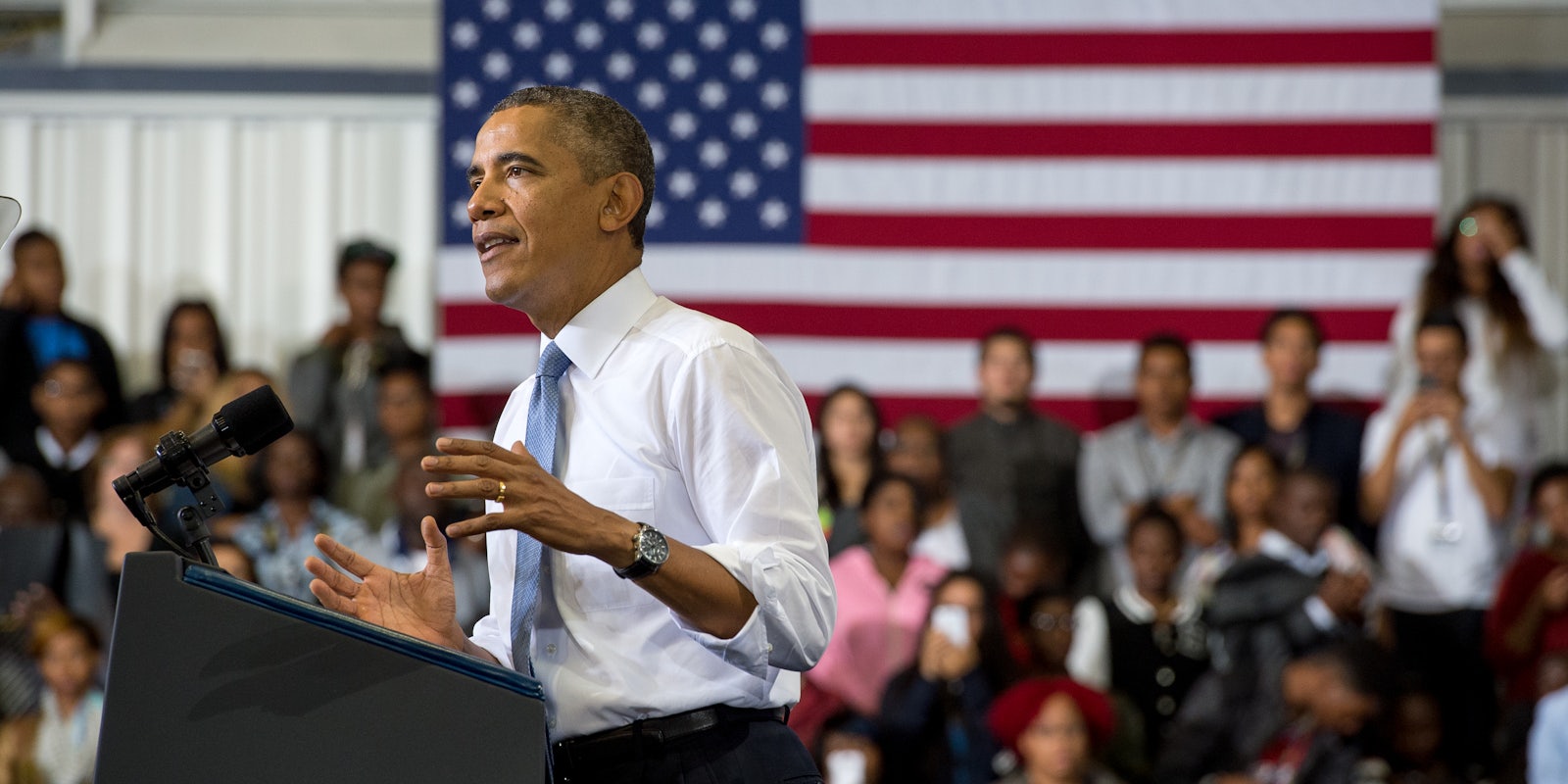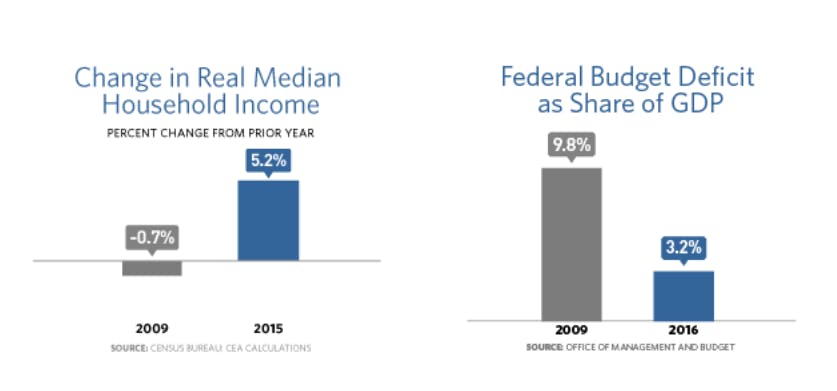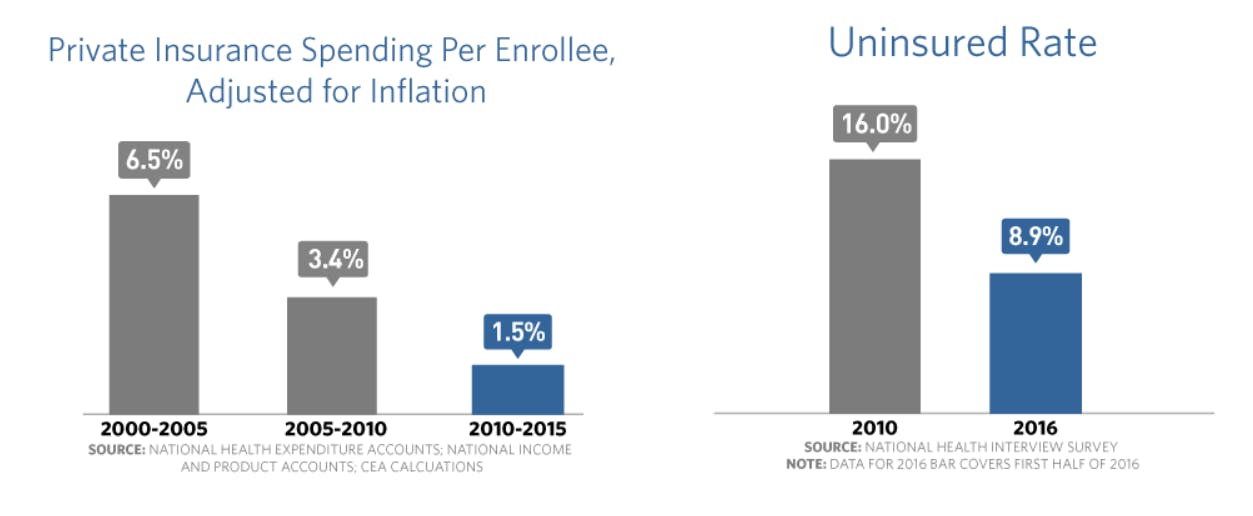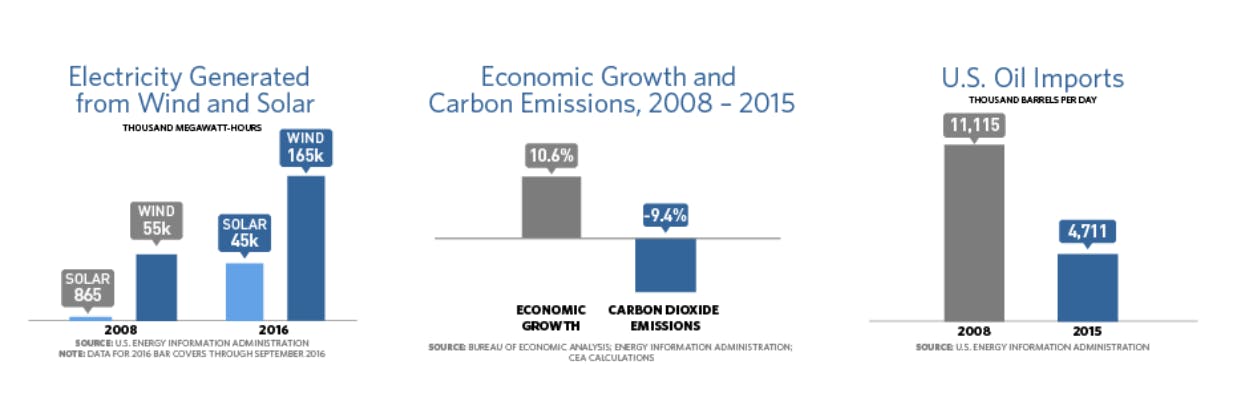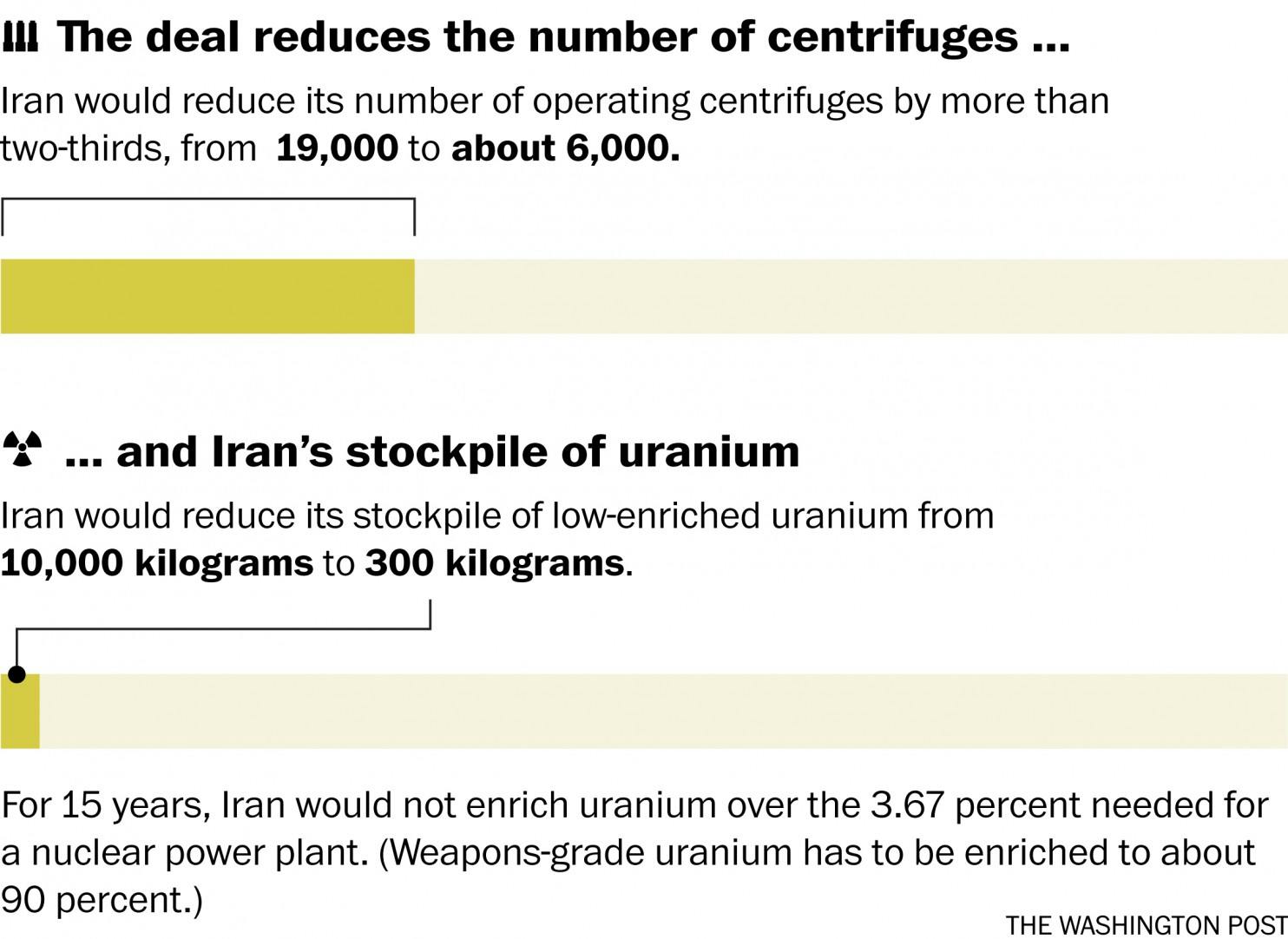President Barack Obama earlier this month addressed the nation in a farewell speech in his adopted hometown of Chicago and will be leaving the White House on Jan. 20 as he hands the keys to the Oval Office to President-elect Donald Trump.
While the president is known for his inspirational speeches and celebrity appearance, his achievements while representing the U.S. are of greater importance. However, the future of the country will soon be in the hands of Trump and a Republican-majority Congress, which plans to reverse a much what the Obama administration accomplished.
“It has been the privilege of my life to serve as your president,” Obama said in his farewell address. “And as I prepare to pass the baton and do my part as a private citizen, I’m proud to say that we have laid a new foundation for America. A new future is ours to write. And I’m as confident as ever that it will be led by the United States of America—and that our best days are still ahead.”
Longest stretch of job creation in history ✓Auto industry is back ✓ 20 million more with health care ✓
Marriage =
“That’s what we did.” pic.twitter.com/3GEkZes3Qa— The White House (@WhiteHouse) January 11, 2017
As a look back on the eight years the Obama administration served the U.S., we’ve gathered the key accomplishments Obama mentioned in his farewell letter to the American people, as well as some that are still underway.
1) Ended the economic recession
Obama inherited the Oval Office at a time when the country was facing the greatest financial recession since the Great Depression in the 1930s. Less than a month serving as the president, Obama signed the American Recovery and Reinvestment Act (ARRA), also known as the controversial $800 billion stimulus package, which was repeatedly mocked on both sides of the political spectrum and deemed a failure by the Republican Party.
The Obama administration promised that the economic recovery plan would create more than 3.5 million jobs in two years, encourage business and consumer spending, and lay a new foundation for a prosperous economy. A year after the financial crisis occurred, the economy began to recover and the stimulus did better than planned.
The ARRA was a ten-year plan, but in just six months it helped end the recession and GDP growth turned positive. The plan grew the economy by 3.9 percent in early 2010, cut taxes by $288 billion, and doled out $224 billion in unemployment benefits, education, and health care.
“Eight years later, an economy that was shrinking at more than eight percent is now growing at more than three percent,” Obama wrote in his farewell letter address. “Businesses that were bleeding jobs unleashed the longest streak of job creation on record.”
Many will debate exactly how many jobs “Obama created” as president and wage growth remains lower than it was before the recession (although it’s improving). But few can argue that America’s economy sits in a worse spot than it did on Jan. 20, 2008 when Obama first took presidential oath.
2) Passed health care reform
In 2010, Obama passed the Patient Protection and Affordable Care Act, or Obamacare, to regulate the cost of health care and make health insurance available to those who were cut out of the system. Without reform, health care spending on Medicare was unfeasible, which was a driving factor to pass the act.
After decades of rising health care costs, today nearly every American now has access to the financial security of affordable health care. pic.twitter.com/5e4nEcCxIM
— President Obama (@POTUS44) January 1, 2017
The ACA lowered two of the most expensive health care costs—emergency rooms and having chronic illnesses—offering citizens coverage that was often affordable, allowing preventative care, and lowering emergency costs. The act subsidized medications, required people higher in the income bracket to pay for them through their taxes, benefiting the middle class the most, but upsetting the wealthy.
Since the law was passed in 2010, 20 million more Americans have access to health care. The signature reform also increased insurance coverage and expanded protections for Americans who were already insured.
Despite the upsides, public opinion on Obamacare remains split, and it is particularly unpopular with Republican lawmakers who have already taken steps to dismantle the law, which they’ve vowed to replace but have yet to decide what that will look like.
3) Implemented criminal justice reform
Obama’s Justice Department took concrete steps to reform a criminal justice system that puts men and women of color at a striking disadvantage. There are nearly 2.2 million Americans behind bars compared to 500,000 in the 1980s. The U.S. makes up 25 percent of prisoners when we are less than 5 percent of the world’s population.
According to the Washington Post, the topic of criminal justice reform is personal to Obama, and he set out to create a fair and efficient criminal justice system, especially after the Black Lives Matter movement following a series of high-profile deaths of black Americans at the hands of police officers.
The Smart on Crime initiative, Fair Sentencing Act, and Task Force on 21st Century Policing were enacted while Obama was in office. These initiatives set to provide a meaningful sentencing reform, reduce repeat offenders, improving public safety, and reducing the $80 billion it cost to keep Americans in prison.
Further, Obama has commuted the sentences of 1,176 people and pardoned another 148.
As a result of Obama’s criminal justice reform efforts, however, Trump won the presidential election while vowing to be a “law and order” president and painting Obama as anti-police. Many doubt Trump will continue Obama’s efforts on this issue.
4) Revitalized the auto industry
In 2008, Obama bailed out the auto industry that was headed toward the brink of collapse. The industry is now profitable for the first time in 15 years and creating jobs at a fast pace.
The Automotive Industry Financing Program set new efficiency standards requiring auto companies to be more competitive against Japanese and German companies. The deal is seen as pertinent for the financial market stability, and without it, some experts estimate that a million jobs would disappear and the economy would be in a threating condition.
Both General Motors and Chrysler emerged from bankruptcy after the bailout and helped them create 340,000 jobs. The auto industry contributes 3.6 percent ($500 billion) to the GDP and the bailout helped America move out of the recession.
5) Invested in clean energy
Since Obama has been in office, the U.S. is generating 30 times more electricity from solar energy than it was in 2008, and the price of solar panels has fallen an estimated 60 percent.
Obama also announced the broad carbon reduction regulations in 2014, which plans to help buildings cut waste, protects the Earth’s landscape, and many other practices to eliminate potent greenhouse gasses. He also rolled out the Clean Power Plan (CPP) that aims to limit the amount of carbon pollution that power plants can pollute in the air.
The CPP, which the Environmental Protection Agency touts as “historic,” continues to face a major legal battle from some two dozen states as well as industry groups over the carbon-emissions-cutting rule’s constitutionality.
According to the Obama administration, these plans will—if they survive a Trump administration and the ongoing legal battle—cut the majority of carbon pollution from every means of transportation and reduce carbon pollution from power plants by 30 percent in 2030.
“Our dependence on foreign oil has been cut by more than half, and our production of renewable energy has more than doubled,” Obama wrote. “In many places across the country, clean energy from the wind is now cheaper than dirtier sources of energy, and solar now employs more Americans than coal mining in jobs that pay better than average and can’t be outsourced.”
6) Killed Osama bin Laden
In 2011, a team of Navy Seals embarked on a classified mission and attacked Osama bin Laden’s compound in Pakistan, eliminating the man who orchestrated the Sept. 11, 2001, terrorist attack—something former President George W. Bush vowed to do but failed to accomplish.
Obama also ended U.S. military operations in Iraq and Afghanistan, known as Operation Iraqi Freedom and Operation Enduring Freedom, respectively—but the fighting continues. And while Obama may claim victory on these fronts—particularly in Iraq—the reality is far messier.
As anti-war critics note, Obama has expanded air operations, the U.S. is conducting special operations in 138 countries, and the U.S. military dropped over 26,000 bombs in 2016 alone. Furthermore, the so-called Islamic State has required some U.S. troops to return overseas, and the militant terrorist group remains the source of threats worldwide.
7) Nuclear agreement with Iran
Obama and Iran entered a historic nuclear peace agreement in 2015, along with the European Union, Russia, and China. The agreement aims to reduce the country’s ability in creating a nuclear bomb for at least 15 years.
The objective was to limit Iran’s nuclear development program and in return, the economic sanctions applied by the United Nations will be lifted to boost their economy.
While the agreement was reassuring in the nuclear department, it did not prevent the country from behaviors like the support of terrorism, refusing to return U.S. hostages, and violating human rights. Critics in Congress, Israel, and Saudi Arabia were adamant in pointing out the limitation of time, and that with Iran’s renewed economy its government could begin building nuclear weapons shortly after the agreement expires.
8) Entered the world’s largest trade agreement
Obama entered one of the world’s biggest trade agreements in October 2015, the Trans-Pacific Partnership (TPP), which covers 40 percent of the world’s economy and has vast effects on global trade.
If ratified and passed, the agreement is said to increase America’s homemade exports, strengthen the middle-class, and make it easier for small business owners to sell American goods by throwing out nearly 18,000 tax barriers.
Countries who are involved:
- Australia
- Canada
- Japan
- Malaysia
- Mexico
- Peru
- United States
- Vietnam
- Chile
- Brunei
- Singapore
- New Zealand
Supporters of the TPP argue that, if it isn’t passed, America’s presence in Asia will weaken, a portion of the country’s jobs could be in danger, and “Made in America” could become even more scarce.
Of course, anyone who paid attention during the 2016 election knows entering the TPP is also one of the most reviled decisions Obama made.
The TPP remains controversial, as some critics say it will drive more money to big corporations, weaken organized labor, reduce internet freedom, and, as Trump and others claim, hurt U.S. businesses.
9) Entered international climate agreement
In 2015, Obama led global efforts alongside 55 countries representing 55 percent of global emissions to tackle climate change with the International Climate Agreement, which went into effect in early November. The plan was negotiated in Paris—hence its nickname, the Paris Agreement—and as a result, United Nations member countries agreed to reduce carbon pollution and solve the issue of global warming by reducing greenhouse emissions.
Last October at the 2016 GO2 meeting, the number of countries required to ratify the agreement was in attendance, and the U.S. and China followed through. Many of the countries involved in the Paris Agreement are directly affected by global warming through natural disasters like typhoons, fluctuating sea levels, and droughts. The main goal of the agreement is to globally unite to help find a preventative solution to climate change.
Although the agreement is positioned as a plan to save the planet, critics question the specifics—particularly how the agreement will be implemented and how improvements will be measured. Developed countries have to raise $100 billion annually to support the developing countries, which was another hurdle for Obama to push past the tough critics.
10) Raised awareness of sexual assault
Vice President Joe Biden and Obama launched a national conversation about the ongoing prevalence of sexual assault and violence against women. Their “It’s On Us” awareness campaign aims to put a stop to sexual assault on college campuses across the nation.
Following the Brock Turner case—the Stanford student raped a college woman and received early release from county jail for good behavior—Biden and Obama made a clear statement that they will not visit college campuses that don’t take serious action against sexual assault and rape.
“An estimated one in five women has been sexually assaulted during her college years—one in five,” Obama said in September 2014. “Of those assaults, only 12 percent are reported, and of those reported assaults, only a fraction of the offenders are punished.”
Biden and Obama have sent guidelines to every campus that receives federal funding, amending current laws to benefit and protect possible victims, and created a task force to educate students and staff on how to react and prevent sexual violence.
11) Supported marriage equality
Obama broke many cultural and social boundaries during his eight years as president, but this might top the list. In 2015, the Supreme Court ruled that LGBT Americans have the freedom to marry same-sex partners.
Today is a big step in our march toward equality. Gay and lesbian couples now have the right to marry, just like anyone else. #LoveWins
— President Obama (@POTUS44) June 26, 2015
The Supreme Court was divided with a 5-4 ruling on same-sex marriage but resolved with a historical victory for gay rights that ruled state laws defining marriage as between a man and a woman unconstitutional.

